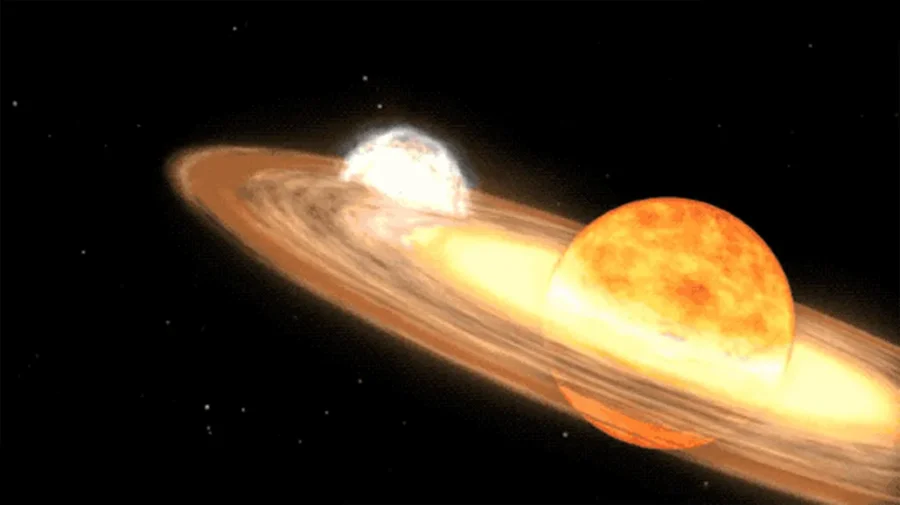A star that’s been visible just three times in nearly 160 years is expected to detonate soon, becoming bright enough to see with the naked eye. T Corona Borealis (TCrB), is a nova, a binary system comprising two stars in the constellation Corona Borealis, that bursts into view about every 80 years. These nova explosions are not unusual, but TCrB is close enough and bright enough that it will be visible to the naked eye, which is rarer.
Carlos Badenes, a professor of astronomy in the Kenneth P. Dietrich School of Arts and Sciences at Pitt, and an expert in star systems similar to this one, answered some nova-related questions.
What is a nova?
A nova is a binary system that contains a white dwarf, a star that has essentially run out of fuel, and another star, held together by gravity. White dwarves are very small and very dense; imagine a star the size of Earth with the mass of the sun. The second star is a larger, active star called a red giant. The white dwarf draws material (usually hydrogen) from the red giant. After a certain amount of hydrogen accumulates on the surface of the white dwarf, a runaway fusion event triggers an explosion. It’s the same mechanism that powers an H- bomb. Eventually the fuel is spent, and the star goes dim again.
What’s the difference between a nova and a supernova?
A nova and a supernova both describe phenomena that, to us look similar: we see a star get bright, and then it dims. But in a supernova, the star gets destroyed. Completely obliterated. A nova doesn’t get destroyed. Not only that, but a recurrent nova, like TCrB, goes through the process of building up hydrogen and exploding over and over again. It was first recorded in 1866, and its most recent explosion was in 1946.
How bright will it be?
The brightest stars in the sky are magnitude one. Magnitude two stars are dimmer than one, magnitude three stars are dimmer than two, and so on. If you’re a young person with good eyesight, you can usually see down to magnitude six with the naked eye. TCrB will be between magnitude two and three, making it one of the hundred or so brightest stars in the entire night sky. For people who live in Pittsburgh, even on a clear night, we don’t see too many stars. Unless it’s completely overcast though, we should – I think – be able to see TCrB from the city.
When and where can we see T Corona Borealis?
The star is expected to explode sometime between now and September, and it’s expected to remain bright for up to a week. Find the star in the constellation Corona Borealis, a u-shaped string of stars that resemble a crown. You can use an app on your phone that will tell you what stars you are looking at (like Google Sky or Night Sky 11 or Star Walk 2). When the nova explodes, you will see a “new” star that is as bright as the brightest star in the constellation.
This hasn’t happened for a long time, a nova that’s close enough and bright enough to see with your naked eye. It will probably be the brightest one that most people will ever see.


